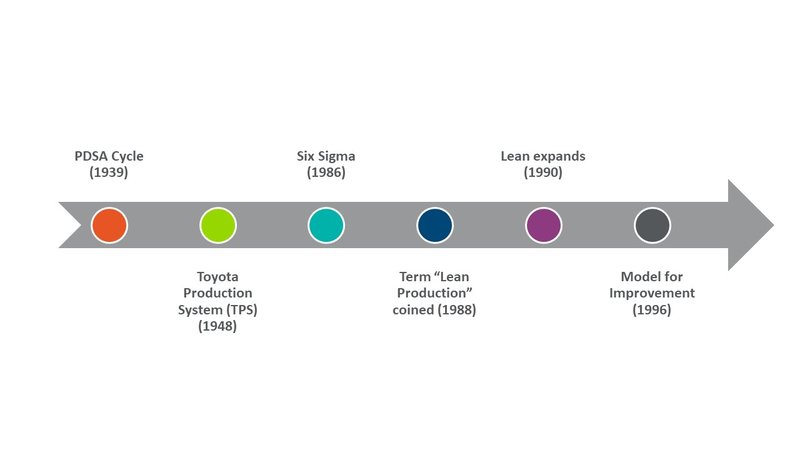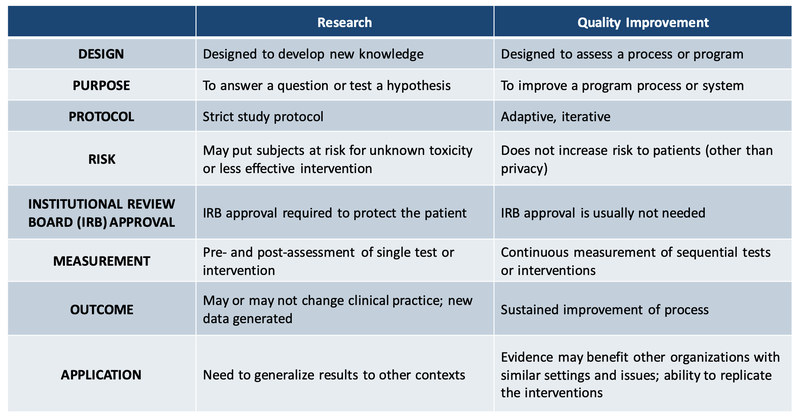Introduction to Quality
What is Quality?

The National Academy of Medicine defines quality as “the degree to which health care services for individuals and populations increase the likelihood of desired health outcomes and are consistent with current professional knowledge.” Quality encompasses various domains, including safety, effectiveness, patient-centeredness, timeliness, efficiency, and equity. Collectively, these contribute to the overall quality of healthcare, aiming to optimize patient outcomes, promote patient satisfaction, and enhance the efficiency and effectiveness.
Quality improvement (QI) refers to systematic efforts to improve healthcare. It involves identifying areas for improvement, implementing evidence-based practices, measuring performance, and making data-driven changes to enhance the overall quality of care.
Evolution of Quality Improvement in Healthcare

Quality Improvement Timeline
Walter Shewhard and Edward Deming developed the precursor to the Model for Improvement by recognizing that the steps in the mass production process (specification, production, and inspection) should be in a circle rather than a straight line. This process was likened to the scientific method: make a hypothesis (plan), test the hypothesis (do), study the results, decide what to do with the results (act).
A precursor to Lean. Developed by the Toyota motor corporation after critical supply shortages following World War II. They used a philosophy of working intelligently, eliminating waste, and continuous improvement to streamline the production process.
Developed by Bill Smith and Mikel Harry, engineers at Motorola. This model uses a set of methodologies and tools to improve processes by reducing defects and errors, minimizing variation, and increasing quality and efficiency.
Other manufacturing companies adopt philosophies of eliminating waste developed by Toyota.
Lean production begins to be used in sectors outside the car manufacturing industry following the publication of “The Machine that Changed the World”, a documentation of the principles of Toyota's Lean Management system.
Developed by Associates in Process Improvement (API). This framework for quality improvement uses the PDSA cycle to accelerate improvement. The Institute for Healthcare Improvement (IHI) adopted this framework, making it one of the most commonly used quality improvement approaches in healthcare.
Research vs. Quality vs. Safety
The majority of residency-trained pharmacists are taught how to conduct research projects, but may not know the differences between traditional research and quality improvement (QI) initiatives. Research and QI projects both aim to enhance patient outcomes via systematic and scientific implementation of objectives. Research projects may generate ideas for quality projects by identifying problems that could be addressed using QI techniques.
For example, a research project may identify a higher rate of infection in patients who are given an autologous stem cell transplant (SCT) in an outpatient setting vs. patients who are admitted for the transplant. A follow-up quality project might focus on identifying issues in workflow around outpatient SCT infection prophylaxis and performing three PDSA cycle interventions. After 6 months, the rates of infection could be reduced in the outpatient population and to match those of the inpatient SCT population.

Although the aforementioned similarities between research and QI projects exist, important distinctions should be known before embarking on a QI project. The table below outlines some of the most important differences and can be used to help pharmacists understand how to approach the project at hand. Perhaps most importantly, QI initiatives do not need to be studied using research methodology. Specific QI tools and methods exist to support correct and statistically relevant QI outcomes. If QI is limited to a strict pre- and post-assessment process like a research protocol, the opportunity for real, sustainable improvement may be lost.
